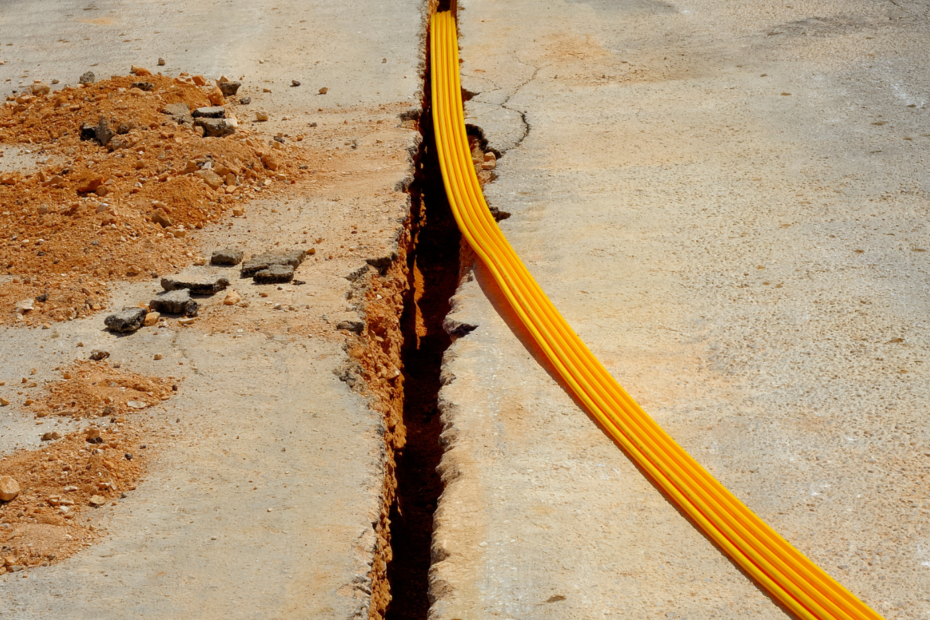The ever-evolving field of telecommunications and internet connectivity demands innovative installation methods that balance efficiency with minimal disruption. Micro-trenching, a cutting-edge approach to outside plant (OSP) infrastructure deployment, is gaining traction, particularly in urban settings. This method offers distinct advantages over traditional installation methods and plays a crucial role in meeting the growing demands of modern urban environments.
Understanding Micro-trenching
Micro-trenching involves creating narrow and shallow slots to house fiber optic cables, conduits, and utilities. Unlike traditional trenching that requires extensive excavation, micro-trenching creates slots ranging from half an inch to two inches in width and up to 12 inches in depth.
Advantages Over Traditional Methods
- Reduced Disruption:
Micro-trenching stands out for its ability to minimize disruption in urban environments. Traditional trenching causes significant disturbance to roads, sidewalks, and landscaping, whereas micro-trenching leaves a smaller footprint, reducing the impact on existing infrastructure and minimizing public inconvenience. - Faster Deployment:
The efficiency of micro-trenching is evident in its rapid deployment compared to traditional methods. The precision of narrow trenches allows for quicker installation of fiber optic cables and utilities, addressing the urgent need for high-speed internet and enhanced telecommunications services in densely populated urban areas. - Cost-Effectiveness:
Micro-trenching proves to be a cost-effective alternative, with reduced labor, equipment, and material costs compared to traditional trenching. The expedited installation contributes to overall project cost savings, making it an appealing option for both telecommunications providers and municipal authorities. - Environmental Impact:
Micro-trenching boasts a lower environmental impact due to its smaller excavation footprint compared to traditional trenching. This eco-friendly approach aligns with the growing emphasis on sustainable infrastructure development, appealing to environmentally conscious stakeholders. - Enhanced Aesthetics:
Urban planners and local authorities favor micro-trenching for its ability to preserve the aesthetic appeal of cityscapes. The controlled, smaller trenches are less intrusive and allow for quicker surface restoration, ensuring that the urban environment remains visually pleasing.
Challenges & Considerations
While micro-trenching presents numerous advantages, it is essential to consider potential challenges. Factors such as soil conditions, utility conflicts, and the requirement for specialized equipment should be carefully assessed before opting for micro-trenching in specific urban environments.
Micro-trenching in OSP infrastructure installation is a transformative technique, especially well-suited for urban settings. Its ability to reduce disruption, expedite deployment, lower costs, and minimize environmental impact positions micro-trenching as a preferred method for telecommunications providers and city planners alike. As technology advances, embracing innovative approaches like micro-trenching becomes crucial for building the smart and connected cities of the future.
Learn More
To find out about how Phoenix Loss Control can help when outside plant infrastructure damages occur, please click here.
For additional information on innovative OSP techniques and methods, check out this article.

